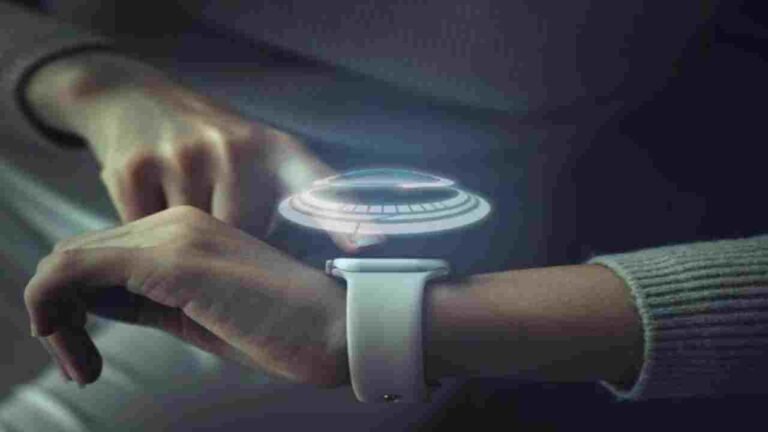1. The Growing Influence of Wearable Technology
Wearable technology has already transformed how we monitor our health, track fitness, and interact with the digital world. As we move into 2025, wearable devices are becoming more advanced, integrating AI, sensors, and connectivity to offer unprecedented convenience and insights. The future of wearables is poised to change not just how we live but also how we think about our relationship with technology.
2. Health Monitoring: Beyond Fitness Trackers
The future of wearable technology lies in health monitoring that goes far beyond fitness tracking. Devices like Apple Watch and Whoop Strap already monitor heart rate, sleep patterns, and activity levels, but in the coming years, expect wearables to include even more sophisticated health metrics. Future gadgets will be able to detect early signs of chronic conditions like diabetes, stress, and even certain cancers using non-invasive sensors.
Key Features:
- Continuous monitoring of health metrics
- Detection of chronic conditions and diseases
- Real-time health data synced with medical professionals
3. Smart Clothing: The Next Step in Wearable Tech
Smart clothing, also known as “e-textiles,” is set to revolutionize the wearable tech space. Fabrics embedded with sensors will monitor vital signs, posture, and even detect muscle fatigue. Wearables like Ralph Lauren’s PoloTech shirt and Athos apparel are already integrating fitness and health data, but expect future developments to push these boundaries, with garments that can provide real-time feedback for everything from muscle performance to body temperature regulation.
Key Features:
- Real-time health and fitness data tracking
- Embedded sensors in clothing for continuous wear
- Temperature and posture monitoring
4. Augmented Reality (AR) Glasses: The Intersection of Wearables and Digital Interaction
The next generation of wearable technology will likely include more powerful AR glasses like Microsoft HoloLens and Apple Glasses. These glasses will combine real-world visuals with digital information, allowing users to interact with their environment in new ways. Whether it’s for work, entertainment, or navigation, AR glasses will offer hands-free access to information and augmented experiences.
Key Features:
- Immersive augmented reality experiences
- Hands-free operation with digital overlays
- Seamless integration with smartphones and cloud services
5. Biometric Authentication: Replacing Passwords with Wearables
With increasing concerns around privacy and security, wearables will play a pivotal role in biometrics. Future devices will use facial recognition, heart rate patterns, or even your body’s unique electrical signals to authenticate identity. This technology will make passwords obsolete and offer a more secure, efficient method of accessing everything from devices to banking services.
Key Features:
- Secure biometric authentication
- Elimination of passwords and PINs
- Integration with financial services and personal devices
6. Advanced Sleep Tracking: Optimizing Rest for Peak Performance
Sleep is critical for overall health, and future wearables are set to offer even deeper insights into sleep quality. Devices like the Oura Ring and Fitbit Sense already track sleep stages, but the next generation will use advanced sensors and AI to offer actionable insights, detect sleep disorders, and help users achieve the perfect sleep cycle for optimal recovery and performance.
Key Features:
- Advanced sleep stage tracking
- Detection of sleep disorders and apnea
- AI-driven sleep improvement recommendations
7. Wearable Payments: The Future of Contactless Transactions
Contactless payments have already begun to infiltrate wearables with devices like the Apple Watch and Samsung Galaxy Watch. In the near future, wearables will make payments even more convenient, allowing users to make purchases through gestures or biometric verification. This will further simplify transactions, eliminating the need for credit cards or even smartphones.
Key Features:
- Gesture-based or biometric payment options
- Enhanced security with tokenization
- Instantaneous and seamless transactions
8. Enhanced Fitness Features: AI-Powered Personal Training
Wearables are going to evolve into fully integrated fitness assistants, with AI-powered personal trainers that not only track performance but also adapt workouts based on progress, fatigue, and goals. Garmin’s Fenix and Peloton’s wearable devices are just the beginning, as these tools will become increasingly advanced, offering real-time feedback on form, performance, and even recovery.
Key Features:
- AI-powered adaptive fitness training
- Real-time feedback on workout performance
- Personalized recovery and fitness suggestions
9. Brain-Computer Interfaces: A Bold Leap into the Future
One of the most groundbreaking advancements in wearable technology will be brain-computer interfaces (BCIs). These devices will read brain signals to enable users to control technology simply by thinking. In the near future, BCIs may allow wearables to detect brain activity related to focus, relaxation, or stress, and respond with appropriate actions, such as triggering calming music or optimizing work environments.
Key Features:
- Control technology via brain signals
- Real-time detection of focus and stress
- Integration with mental wellness tools
10. Sustainability in Wearable Tech: Eco-Friendly Gadgets
As sustainability becomes a global priority, future wearables will also focus on eco-friendly materials and energy efficiency. Expect wearables to be made with recycled materials, energy-harvesting capabilities, and long-lasting, eco-conscious designs that will reduce electronic waste and carbon footprints.
Key Features:
- Made with sustainable, recycled materials
- Energy-harvesting capabilities
- Long-lasting battery life and eco-friendly design
Conclusion: Wearable Technology’s Transformative Impact
The future of wearable technology is not just about convenience—it’s about enhancing every aspect of our lives, from health and fitness to security and productivity. As technology advances, wearables will become more integrated into our daily routines, providing us with seamless, data-driven insights and experiences that were once unimaginable. The next generation of wearable devices will empower users to live smarter, healthier, and more connected lives, fundamentally altering how we interact with technology.

